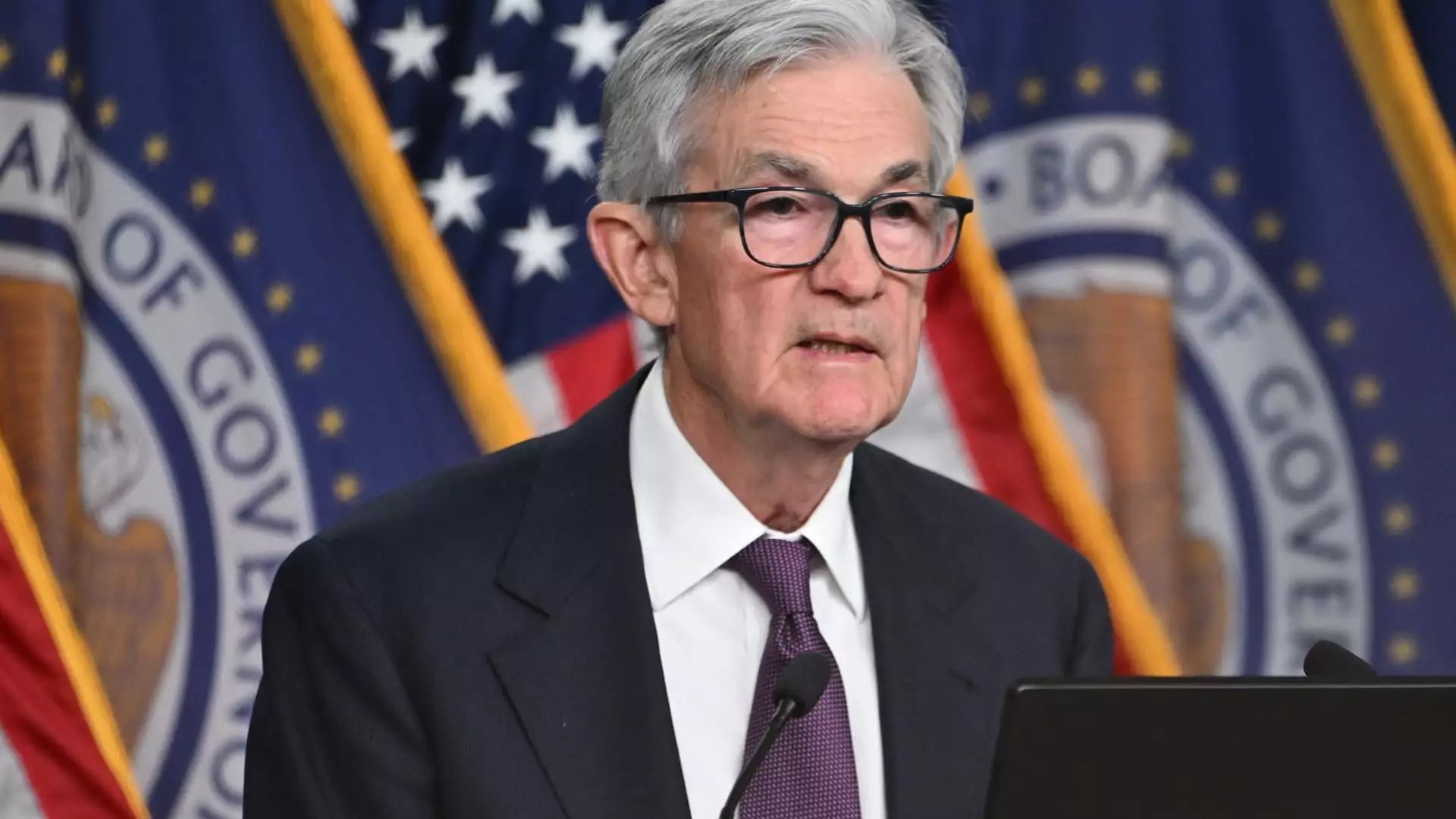On a pivotal Wednesday in Washington, the Federal Reserve made headlines by reducing its key interest rate by a quarter of a percentage point. This marked the third consecutive reduction in a cycle that has both surprised and concerned various stakeholders. The move saw the Federal Open Market Committee (FOMC) bring the overnight borrowing rate to a target range of 4.25%-4.5%, aligning it with levels last seen in late 2022. While the interest rate cut was anticipated, the more significant concern for economists and market analysts lay in the Fed’s message regarding future cuts amidst rising inflation and stable economic growth.
In recent communications, Federal Reserve Chair Jerome Powell emphasized a cautious approach to further rate cuts, suggesting the possibility of only two additional reductions in the year 2025. This nuanced stance represented a significant shift from previous rate projections, where a more aggressive approach seemed plausible. Market analysts keenly observed the “dot plot” matrix representing FOMC members’ individual expectations; the recent update hinted at a tempered outlook for interest rate reductions. Observers noted that the Fed’s policy stance, increasingly less restrictive, indicates a strategic recalibration focused on economic sustainability rather than aggressive easing.
The market’s reaction to the Fed’s rate cut was immediate and pronounced. Following the announcement, the Dow Jones Industrial Average experienced a sharp decline, shedding over 1,100 points. Conversely, Treasury yields surged, suggesting an underlying skepticism about the Fed’s capacity to maintain a prolonged easing policy against a backdrop of resilient inflation and steady economic growth. Despite the cut, essential economic indicators tell a more complex story; for instance, the anticipated GDP growth for 2024 was increased to 2.5%, countering fears of an impending economic slowdown.
The juxtaposition between an optimistic GDP projection and elevated inflation rates raises pertinent questions about the Fed’s decision-making framework. With inflation remaining stubbornly above the target rate, the Fed appears to be navigating uncertain waters. Powell’s assertion that the Fed must act carefully highlights a commitment to maintaining economic stability while also considering future fiscal policies. The interplay between rising consumer prices and the necessity for cautious monetary policy creates a challenging environment for the central bank.
As the economic landscape continues to evolve, the potential impact of future fiscal policies under the incoming administration cannot be overlooked. President-elect Donald Trump’s plans—entailing tax cuts and possible tariffs—pose significant inflationary risks that could further complicate the Fed’s objectives. Such policies could drive prices up and stifle growth, creating a discordant backdrop against which the Fed must balance its rate decisions. Powell’s caution in assessing these fiscal developments suggests an awareness of the intricate dynamics at play.
The phrase “we need to take our time” exemplifies the Fed’s commitment to evaluating economic conditions holistically rather than reacting impulsively to transient data releases. The emphasis on a measured response aligns with a broader vision for policy effectiveness that stresses long-term economic health over short-term gains.
Despite the rate cuts, market participants have responded by raising mortgage rates and Treasury yields, which hints at skepticism regarding the efficacy of further monetary easing. This skepticism underscores a potential disconnect between the Fed’s intentions and market realities, as observed in the rise of the policy-sensitive 2-year Treasury yield. Additionally, the Fed’s adjustments to its overnight repurchase agreement facility rates reflect an effort to maintain alignment within its broader monetary policy framework.
As the central bank embarks on a prolonged recalibration of interest rates, the focus remains on how these policy shifts will translate into tangible economic outcomes. The decision to lower rates has implications beyond mere borrowing costs; it affects consumer spending, business investment, and overall economic confidence.
The Federal Reserve’s recent interest rate cuts signify a critical pivot point amidst rising inflation and steady economic growth. By adopting a cautious stance, the Fed is signaling its intent to retain strategic flexibility, acknowledging the intricate relationship between monetary policy and fiscal developments. As economic indicators evolve and market reactions unfold, stakeholders will continue to scrutinize the Fed’s trajectory in navigating the challenges that lie ahead. The evolving interplay of inflation rates, fiscal policies, and consumer confidence will ultimately shape the broader economic landscape, making it indispensable for the Fed to remain vigilant and responsive to emerging trends.

